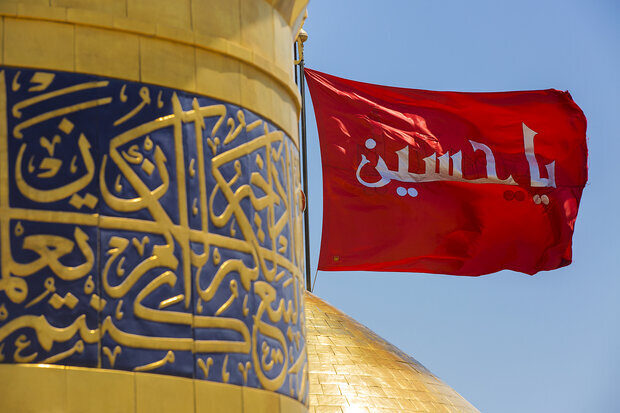Ashura: an everlasting source of political inspiration

For Muslims worldwide, particularly Shia Muslims, the month of Muharram is one of the most intense periods in the Islamic calendar due to its profound historical significance. During this month, Muslims from all backgrounds commemorate the martyrdom of Hussain ibn Ali (AS), the grandson of Prophet Muhammad (PBUH), and his companions in Karbala in the year 680 AD.
The main ceremonies on Ashura, the tenth day of Muharram, involve public expressions of mourning and a reaffirmation of the principles exemplified by Imam Hussain (AS) and his companions in their stand against the corrupt Umayyad ruler of the time, Yazid.
One of the most common manifestations of this mourning is the ta'ziyeh. This term denotes expressions of "sympathy," "mourning," and "consolation," and can be understood as an Islamic drama that, through performances, poetic recitations, and songs, recounts the greatest tragedy of all time. While the spiritual aspect of Muharram is significant, the political aspect should not be overlooked. Despite being a historical event, the martyrdom of Imam Hussain (AS) functions as an ontological paradigm of the struggle against oppression and the suffering caused by it.
The division between oppressors and oppressed, known as mostakberin and mostazafin in Quranic language, represents the Islamic ontological division of the world. Simultaneously, it serves as a political division that publicly distinguishes between friends and foes. The enemies are characterized by a complete absence of justice, making them antithetical to any form of political articulation based on Islam.
In this context, it is important to recall that in the Quranic chapter al-Qasas, there is an unequivocal preferential option for the oppressed. This preferential option for the oppressed is reflected in the identification of God Himself with the mostazafin.
In onto-political terms, it can be said that the events of Karbala represent a significant episode in the perennial struggle against the category of taghut. Taghut, derived from the Arabic verb tagha, means to dominate or transgress the limits.
The Quran repeatedly warns against those who "transgress the bounds of justice by dominating and oppressing others."
The Quran also recounts the story of Moses and Pharaoh, where Pharaoh's name transcends that of an individual, becoming a symbolic reference to any form of domination that violates the principles of equity.
The paradigm of Karbala, therefore, represents an ongoing political struggle against oppression, injustice, and domination. Moreover, a connection can be established between Imam Hussain (AS), the mostazafin, and the need to articulate a response that allows for a different way of being in the world, distinct from the hegemonic one.
On the other hand, this hegemonic way of being in the world is connected to Yazid, the tyrant who ordered the martyrdom of Imam Hussain (AS); to the mostakberin; to the archetypal figure of Pharaoh; to the category of taghut; and ultimately to the epistemological domination characteristic of the West.
During the events of 15 Khordad in 1963 – which corresponds to June 5, 1963, in the Gregorian calendar – the founder of the Islamic Revolution, Imam Khomeini, employed this same political-ontological paradigm by comparing the Shah to Yazid.
The political use of the Karbala paradigm reemerged in a speech given by Imam Khomeini in 1979, months before his triumphant return to Iran after years in exile.
In a speech titled "The Fortieth Day After Ashura," Imam Khomeini established a connection between the martyrs of the Islamic Revolution and the martyrs of Karbala.
"It is as if the blood of our martyrs continues the bloodshed of the martyrs of Karbala, and as if the commemoration of our brothers echoes the commemoration of those brave souls who fell in Karbala. Just as their pure blood put an end to the tyrannical rule of Yazid, the blood of our martyrs has shattered the tyrannical monarchy of the Pahlavi dynasty,” he said.
This speech exemplified the importance of Karbala, the martyrdom of Imam Hussain (AS), and the observance of Muharram as political archetypes in the struggle against oppression. It also underscored the Islamic genealogy of this struggle. As previously noted, this struggle is intricately linked to resistance against oppression and, more broadly, is centered around the constant pursuit of justice.
The use of the Karbala paradigm by Imam Khomeini and his followers highlights the relevance and continuity of the ontological division between the oppressed and oppressors. This political articulation centered around the Karbala paradigm is further elucidated by Imam Khomeini's explicit rejection of the concept of intizar, which can be translated as quietism.
Intizar posits that every government is illegitimate in the absence of the twelfth Imam, yet it suggests that any government is better than no government at all.
Imam Khomeini made it clear that, in the absence of Imam Mahdi (AS), the savior of humanity, Muslims should strive to live under an Islamic government. His political practice modified the idea of intizar, transforming it from a passive wait for the Imam's return into an active, political effort to pave the way for his return.
In this context, it's crucial to recall that Imam Khomeini effectively re-contextualized the Karbala paradigm to focus the struggle against injustice perpetrated by the powerful in this world. This requires examining his ideas not only through a theological lens but also from a political perspective. The slogan popularized by revolutionary activists during the 1979 Islamic Revolution - "Every place is Karbala and every day is Ashura" - remains a potent reminder today of the enduring political significance of the Karbala paradigm. It underscores the perpetual quest for justice that it represents.
It's significant to recognize the role of the mostazafin as political actors, both during the events of 15 Khordad and the Islamic Revolution, and their alignment with the struggle for justice epitomized by Imam Hussain (AS).
